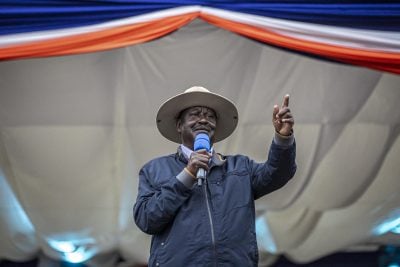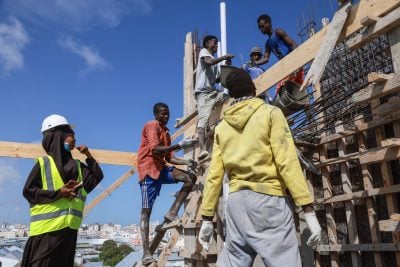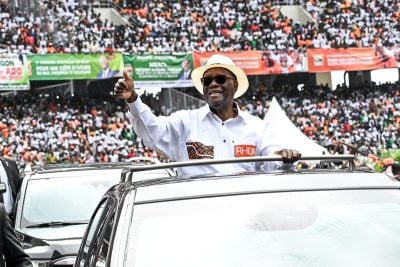Disturbances have continued in Kenya for a second week after clashes between police and protesters intensified in the western city of Kisumu on Tuesday, following reports that police had shot dead a demonstrator and wounded two others after an incident over payment of a bribe by a local taxi driver.
This followed violent clashes last week when Kenyans returned to the streets of Nairobi and other cities after a one month pause to protest high living costs and alleged fraud in last year’s election.
Opposition protesters hurled stoned at Kenyan police, who responded with tear gas, as demonstrators marched to the Office of the President in central Nairobi to present a petition. In Kisumu, an opposition stronghold, protesters set vehicles on fire and erected barricades along major roads, paralysing businesses.
Kenya’s opposition leader, Raila Odinga, had renewed a call for countrywide protests every Monday and Thursday, originally made in March, to demand that President William Ruto lower the cost of living and reform the electoral commission.
On 4 May the opposition cancelled the protests again following talks with the government, but unrest has continued in Kisumu.
Economic cost
While the protests called by Odinga have been a thorn in Ruto’s side, they are unlikely to destabilise his government, Ben Hunter, East Africa analyst at risk intelligence company Verisk Maplecroft, commented after the disturbances last week.
“Despite widespread economic discontent, Odinga’s clear personal objectives will hinder his attempts to destabilise the government,” he told African Business.
The majority of Kenyans are unlikely to support a campaign to overturn the result of the election, which Odinga lost to Ruto, as the evidence supporting claims of election fraud is very weak, said Hunter. In September, the Supreme Court dismissed Odinga’s challenge to the results.
Nevertheless, such protests have the power to hit the economy – the Kenya Revenue Authority (KRA) missed its monthly revenue targets for February and March after the earlier protests.
Recent tax hikes, including on fuel, motorcycles and cooking gas, have increased the economic burden for many Kenyans. The government has been attempting to increase its funding streams, having committed to expensive policies such as the Hustler Fund, a project to increase low-cost financing to citizens, including entrepreneurs.
Meanwhile the Kenyan shilling has been in free-fall for almost three years with little sign of recovery, and the sovereign debt is causing concerns, said Hunter.
“The government was unable to pay civil servants in March and the rapid depreciation of the Kenyan shilling has raised concerns about the potential for a sovereign default.”
Kenya’s total external debt rose to $34.8bn in 2020 (35.4% of GDP), according to the Central Bank of Kenya (CBK), while the country has a $2bn Eurobond maturing in June 2024.
Read more about Kenya
‘Hustler Fund’ offers hope to 19m Kenyans
Carbon trading at work – promoting clean cooking stoves in Kenya
Geothermal race heats up Africa
Additional reporting by Harry Clynch.
Want to continue reading? Subscribe today.
You've read all your free articles for this month! Subscribe now to enjoy full access to our content.
Digital Monthly
£8.00 / month
Receive full unlimited access to our articles, opinions, podcasts and more.
Digital Yearly
£70.00 / year
Our best value offer - save £26 and gain access to all of our digital content for an entire year!
 Sign in with Google
Sign in with Google 



